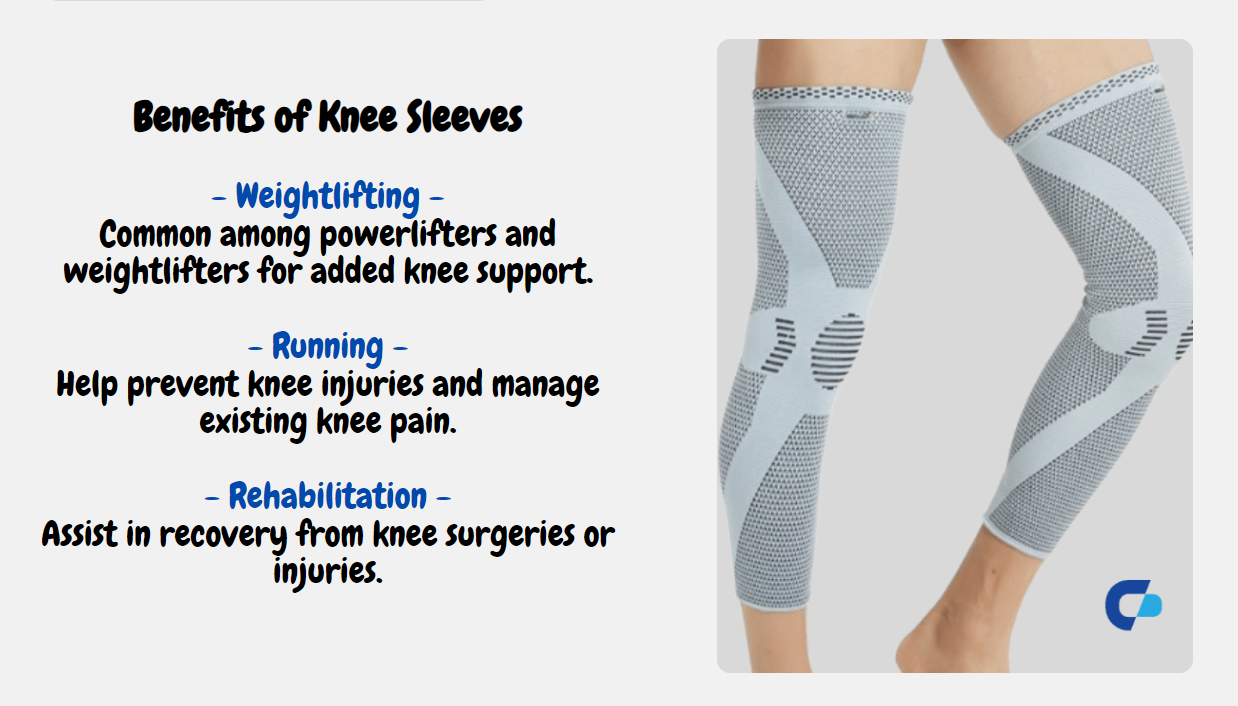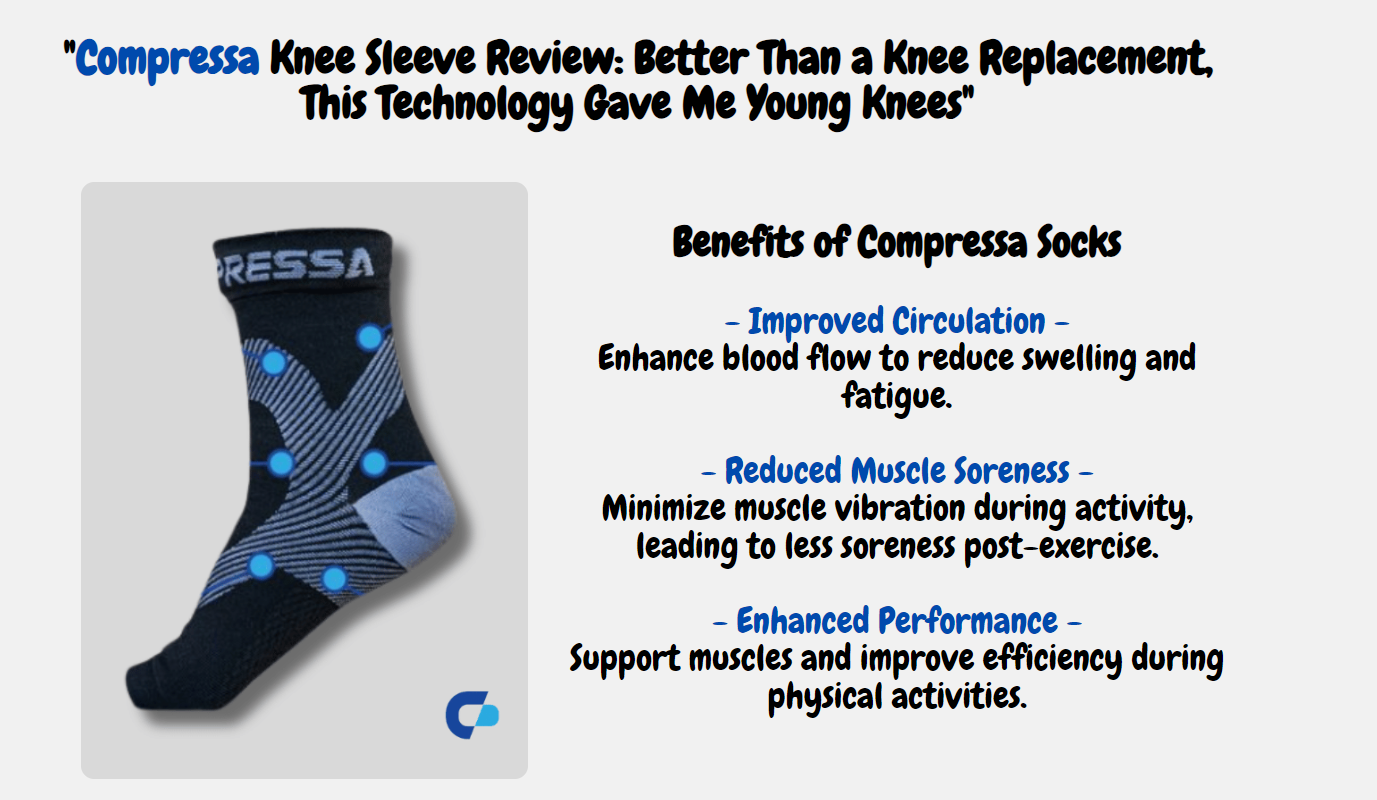Compression Therapy for Carpal Tunnel Syndrome: Effective Wrist Pain Relief
Discover how compression therapy can effectively relieve carpal tunnel syndrome. Learn about the benefits of wrist compression sleeves for managing pain and improving wrist health.

Carpal Tunnel Syndrome (CTS) is a prevalent condition affecting millions worldwide, particularly those who perform repetitive hand movements, such as typing, assembly line work, or other manual tasks. This condition, characterized by pain, numbness, and tingling in the wrist and hand, can significantly impact daily life.
Among the various treatment options available, compression therapy has emerged as a non-invasive and effective solution for managing the symptoms of Carpal Tunnel Syndrome.
This comprehensive guide explores how compression therapy can provide relief for CTS, the science behind its effectiveness, and why compression sleeves are an ideal choice for anyone suffering from wrist pain. By understanding the benefits of this approach, you can make an informed decision to alleviate your symptoms and improve your overall wrist health.

Understanding Carpal Tunnel Syndrome
Before diving into the benefits of compression therapy, it’s important to understand what Carpal Tunnel Syndrome is and how it affects the body. The carpal tunnel is a narrow passageway located on the palm side of the wrist. It houses the median nerve, which controls sensation in the thumb and first three fingers (except the little finger), and the tendons that allow the fingers to bend.
Carpal Tunnel Syndrome occurs when the median nerve is compressed or squeezed as it passes through this tunnel. This compression can result from various factors, including repetitive hand movements, wrist anatomy, or underlying health conditions like diabetes or rheumatoid arthritis. Common symptoms include:
- Numbness and tingling: Often felt in the thumb, index, middle, and ring fingers.
- Pain: This may extend from the wrist up into the arm and can worsen at night.
- Weakness: Affected individuals may struggle with gripping objects, and in severe cases, muscle atrophy in the thumb can occur.
CTS is often exacerbated by activities that involve repetitive wrist motions or sustained pressure on the wrist, making it a significant concern for people in certain occupations or those who spend extended periods typing or using their hands.
Compression Therapy: A Non-Invasive Solution
Compression therapy is a treatment method that involves applying pressure to a specific area of the body to improve circulation, reduce swelling, and provide support to the affected muscles and joints. In the case of Carpal Tunnel Syndrome, compression sleeves are designed to fit snugly around the wrist, providing targeted pressure that can help alleviate pain and discomfort.
How Compression Therapy Works
The basic principle behind compression therapy is to improve blood circulation and reduce the pressure on the nerves and tendons within the carpal tunnel. When you wear a compression sleeve, it gently compresses the wrist, which helps:
- Reduce Swelling: Inflammation is a common issue with CTS, and compression can help manage this by preventing excess fluid buildup in the wrist area.
- Support the Wrist: Compression sleeves provide additional support to the wrist, which can stabilize the joint and prevent movements that may exacerbate symptoms.
- Enhance Circulation: Improved blood flow aids in reducing inflammation and promoting healing in the affected area.
Compression therapy is particularly beneficial because it addresses both the symptoms and underlying causes of Carpal Tunnel Syndrome without the need for invasive procedures or medications. This makes it an attractive option for individuals seeking a non-invasive way to manage their condition.
Benefits of Compression Sleeves for Carpal Tunnel Syndrome
Using compression sleeves specifically designed for the wrist offers several advantages for individuals suffering from Carpal Tunnel Syndrome. Here are the key benefits:
1. Immediate Pain Relief
Compression sleeves provide instant relief from pain by stabilizing the wrist and reducing the pressure on the median nerve. The gentle compression helps to alleviate the tingling and numbness associated with CTS, making daily activities more manageable.
2. Enhanced Comfort
Modern compression sleeves are made from lightweight, breathable materials that provide comfort throughout the day. They are designed to be worn under clothing, making them discreet and easy to integrate into your daily routine.
3. Improved Circulation
One of the significant benefits of wearing a compression sleeve is the enhancement of blood circulation in the wrist area. By improving circulation, the sleeve helps reduce inflammation and promotes faster healing, which can lead to long-term relief from CTS symptoms.
4. Non-Invasive and Drug-Free
Compression therapy is a non-invasive labour treatment option, meaning it does not require surgery or injections. It is also drug-free, making it an ideal solution for individuals looking to avoid medication and its potential side effects.
5. Preventive Care
In addition to treating existing symptoms, compression sleeves can be used as a preventive measure for those at risk of developing Carpal Tunnel Syndrome. Individuals who engage in repetitive wrist movements, such as typing or manual labour, can benefit from wearing a compression sleeve to reduce the strain on their wrists and prevent the onset of CTS.

Compressa Socks, Knee Sleeves, and Wrist Sleeves
Ultimate Guide to Benefits, Usage, and SelectionDiscover the benefits, uses, and how to choose the right Compressa socks, knee sleeves, and wrist sleeves. Enhance performance, recovery, and comfort with expert insights.
How to Use Compression Sleeves Effectively
To get the most out of your compression therapy, it’s important to use compression sleeves correctly. Here are some tips to ensure you are using them effectively:
1. Choose the Right Fit
A compression sleeve that is too tight can restrict blood flow, while one that is too loose may not provide the necessary support. It’s essential to choose a sleeve that fits snugly but comfortably around your wrist.
2. Wear During High-Risk Activities
For those who engage in repetitive wrist movements, wearing the sleeve during these activities can help prevent the symptoms of CTS from worsening. This includes wearing the sleeve while typing, using tools, or performing any tasks that put strain on your wrists.
3. Follow Usage Guidelines
While compression sleeves can be worn throughout the day, it’s important to follow the manufacturer’s guidelines on usage. Some sleeves are designed for all-day wear, while others may be recommended for use during specific activities or times.
4. Pair with Other Therapies
Compression therapy can be even more effective when combined with other treatments for CTS, such as physical therapy, wrist exercises, or ergonomic adjustments in your workspace.
When to See a Doctor
While compression therapy is highly effective for managing mild to moderate symptoms of Carpal Tunnel Syndrome, it’s important to consult with a healthcare professional if you experience severe symptoms or if your condition does not improve with compression therapy. In some cases, more intensive treatments such as corticosteroid injections or surgery may be necessary.
Choosing the Right Compression Sleeve
Not all compression sleeves are created equal. When selecting a compression sleeve for Carpal Tunnel Syndrome, consider the following factors:
Material
Look for sleeves made from high-quality, breathable materials that wick away moisture and provide comfort throughout the day. Neoprene and nylon are commonly used for their durability and flexibility.
Compression Level
The level of compression is crucial to the effectiveness of the sleeve. Too much compression can restrict blood flow, while too little may not provide adequate support. Choose a sleeve with a compression level that suits your needs.
Design and Fit
A well-designed compression sleeve should fit snugly around your wrist without slipping or bunching. Some sleeves feature adjustable straps or Velcro closures for a more customized fit.
Customer Reviews
When choosing a compression sleeve, it’s helpful to read customer reviews to learn about the experiences of others who have used the product. Look for reviews that mention comfort, effectiveness, and durability.

Conclusion
Compression therapy offers a practical and effective solution for managing the symptoms of Carpal Tunnel Syndrome. By using a well-fitted compression sleeve, you can reduce pain, improve circulation, and support your wrist as it heals. Whether you’re experiencing mild symptoms or looking to prevent CTS, compression sleeves are a valuable tool in your health arsenal —making it a practical option for anyone looking to reclaim their comfort and productivity.
For those seeking non-invasive, drug-free relief, compression therapy stands out as an ideal option. By incorporating this therapy into your daily routine, you can enhance your quality of life and maintain the health of your wrists, allowing you to continue with your daily activities without the constant burden of pain.
If you’re interested in trying compression therapy, explore the range of compression sleeves designed for Carpal Tunnel Syndrome available at wristsleeve.getcompressa.com. Experience the benefits of targeted compression and take the first step towards effective wrist pain relief today.
But what about you? Have you tried compression therapy for your wrist pain, or do you have other methods that have worked for you? We’d love to hear your thoughts and experiences in the comments below.
If you found this article helpful, don’t keep it to yourself! Share it with your friends and followers—you never know who might be struggling with wrist pain and could benefit from this information. Let’s spread the word and help more people find relief!
#WristHealth #CarpalTunnelRelief #CompressionTherapy #ShareTheRelief #BloomclicksBlog





